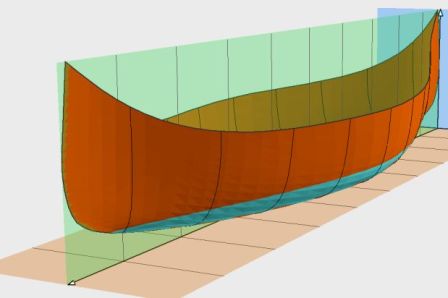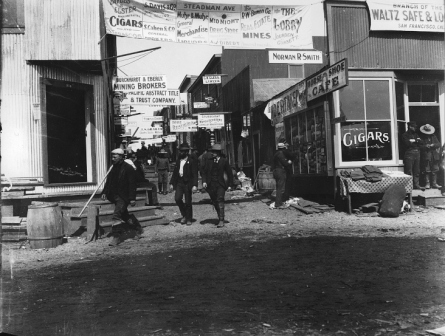Edwin Tappan Adney was an artist, a writer, a photographer and the man credited with saving the art of birchbark canoe construction. He built more than 100 models of different types, which are now housed at the Mariners' Museum in Newport News, Virginia. Adney also authored a book, The Klondike Stampede about the Klondike Gold Rush.
In 1887 Adney visited Sharp's family in Woodstock. During this visit he met Peter Joseph, a Malecite canoe builder living in the area. This meeting would have a profound impact on Adney's life. He began drawing bark canoes and, under Jo's tutelage, built his first model. In 1890, based on his time with Jo, Adney published a description of canoe building in Harper's Young People Supplement.
Between 1897 and 1900 Adney traveled in Canada and Alaska as a correspondent covering the Klondike and Cape Nome gold rushes. His work appeared in a variety of publications-Harper's Weekly, The London Chronicle, and Collier's Weekly. He also published a book based on these experiences, The Klondike Stampede. During these travels he continued to develop his interest in native cultures.
From 1902 to 1916 Adney-then married to Minne Bell Sharp and having had a son, Francis Glenn-moved between New York City and Woodstock working at various jobs in a struggle to make ends meet. With the onset of World War I, Adney joined the Canadian Expeditionary Force where he served as a lieutenant in the Royal Canadian Engineers and became a Canadian citizen. During his service he designed and built models for training in trench warfare.
Following the war Adney moved to Montreal where he supported himself as a commercial artist, specializing in heraldry. There his interest in canoe history and design flourished. Adney dedicated himself to researching and writing on canoes and Native American culture. In the 1920's he began seeking a publisher for a book on bark canoes. Unsuccessful in his intention to publish, he continued his research, writing, and model-building. In 1928 Adney, amidst financial hardship, placed his model canoe collection at McGill University's Strathcona Ethnological Museum and arranged for a loan using the collection as collateral.
In 1933 Adney left Montreal for Woodstock to care for his wife who was in poor health. While there he remained focused on his work and continued to search for a publisher. In 1937 his wife passed away leaving Adney alone and destitute. Two years later the Strathcona Ethnological Museum took possession of his models because he had defaulted on his loan.
In 1940 The Mariners' Museum acquired Adney's model canoe collection from McGill University by paying off Adney's loan with accumulated interest. This exchange was facilitated by Fred Hill, an agent of The Mariners' Museum and an ardent admirer of Adney's work. Additionally The Mariners' Museum pledged to pay Adney a monthly stipend of $100 to complete his book. Adney died on October 10, 1950, never having completed his book.




